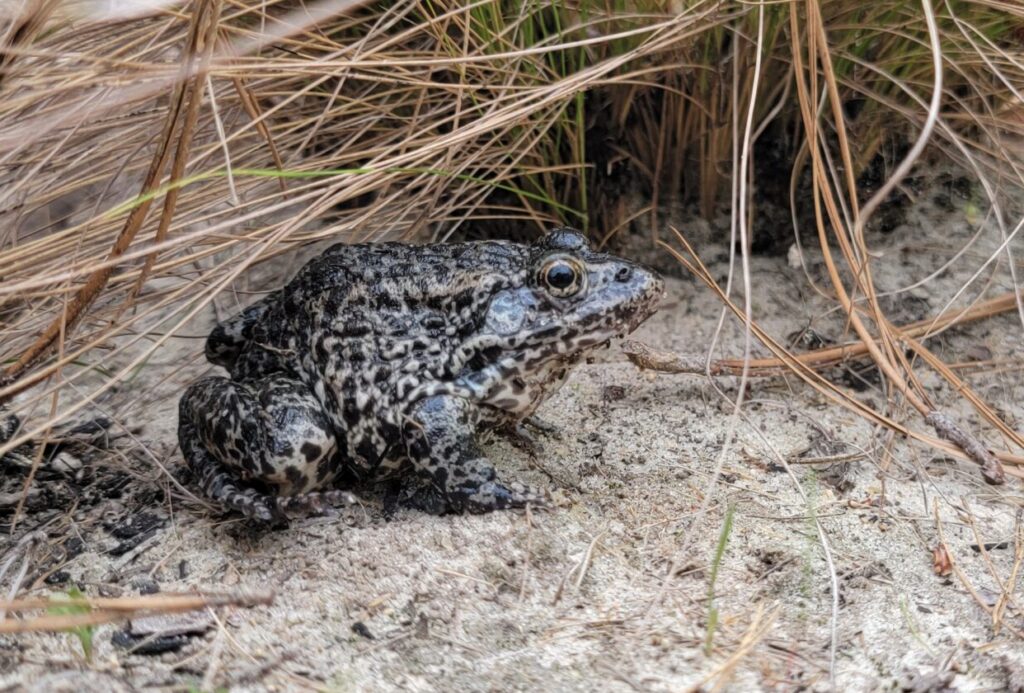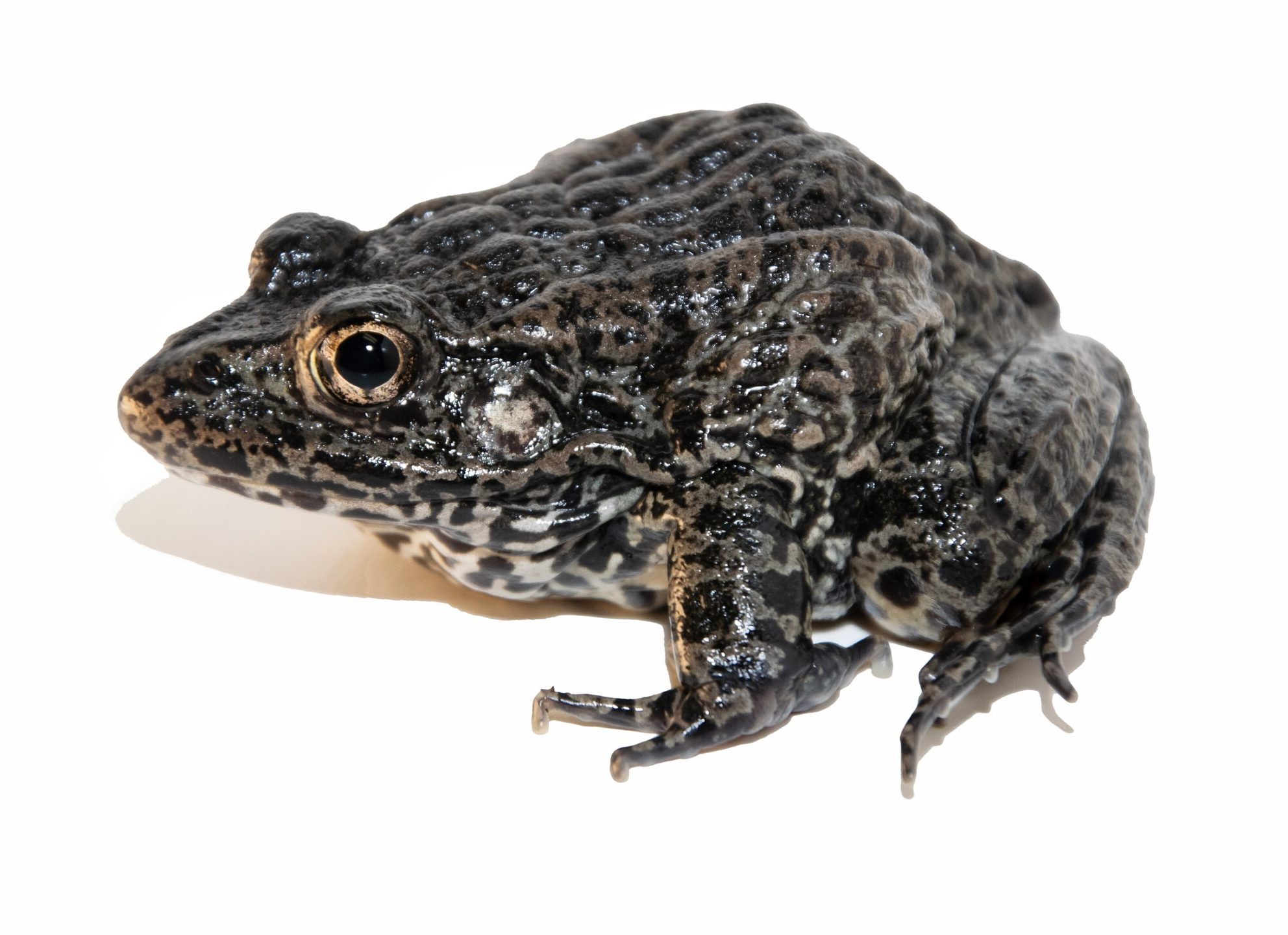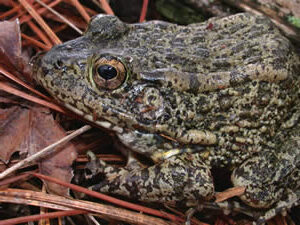Gopher Frog (Rana [Lithobates] capito)
Gopher Frog (Lithobates capito)



Gopher Frog Call
Description: The gopher frog (Lithobates capito) is a stout, short-legged, medium-sized frog with adults typically ranging from 6–10 cm (2.4–3.9 in) in length. The dorsal skin can be smooth or slightly warty with variable coloration ranging from light tan to dark brown with numerous irregular dark spots. Two prominent dorsolateral ridges extend along the entirety of the back and can be gold to light brown in color. Ventral coloration is typically lighter (white or cream) with dark irregular spotting. Tadpoles are globular, medium to large in size, and long-tailed. Tadpole body coloration can range from green, gold, to light brown, typically with darker spotting throughout the body and tail. Egg masses are large (>2000 eggs, similar in size and shape to a softball or grapefruit when first laid) and typically attached to a thick stem of emergent vegetation. Adults are rather unique in appearance and not often mistaken for other species. However, egg masses and tadpoles can be difficult to distinguish from southern leopard frogs (Lithobates sphenocephalus).
Range and Habitat: Occurs across the Gulf and Atlantic Coastal Plains, from east-central North Carolina south into most of Florida (excluding the southern tip). Associated with upland habitats such as fire-maintained longleaf pine forests, scrub oak, bottomland hardwoods, and pine flatwoods. Adults spend most of the year in sandy, upland habitats in underground refugia, including stump holes, gopher tortoise burrows, small mammal burrows, and tunnels created by other animals and/or trees. Adults breed in ephemeral, fishless, herbaceous wetlands.
Habits: Adults are primarily fossorial and will remain very close to a single or a small group of underground refugia in the upland habitat for most of the year. Adults can travel long distances to breed (up to 2 miles, 3.5 km). After migrating to breed, adults have been observed returning to the same burrow that they previously occupied before the breeding event. An active gopher frog burrow can be identified by the presence of a cleared-out area, or “pad”, outside of the burrow. Each “pad” is created by small movements of the frog. The purpose of these pads is unknown; however, it has been suggested that they feed from these pads and can still quickly jump back into their burrow if needed. Breeding is opportunistic and can occur throughout the year (typically in late winter/early spring, but can also occur in late fall/early summer), often following a heavy rain event. Tadpoles may require 3–7 months to complete metamorphosis. Individuals can live 6–8 years and reach maturity at 2-3 years of age.
Call: A deep, guttural snore; a large chorus resembles a low-pitched roar.
Conservation Status: Populations are declining across much of the range. Listed as Endangered in Alabama, North Carolina, and South Carolina; Imperiled in Florida; and a Species of Special Concern in Georgia. Threats include habitat loss and alteration due to urbanization, forestry practices, and agriculture.


